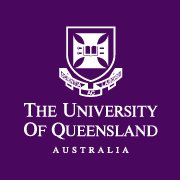Full description
Tissue samples were obtained from whole kidney post-nephrectomy without flushing the blood, fixed in formalin for 24 h and washed with saline for 3 d at 4°C prior to scanning. Samples were scanned at room temperature using a Bruker Biospec 16.4 T MRI at the Centre for Advanced Imaging, The University of Queensland. This scanner is equipped with a Micro2.5 gradient (1.5 T/m at 60 A). Microimaging coils appropriate to the size of the samples were used, these included a 15×30 mm surface coil, a 15 mm and a 10 mm volume coil. Samples were either placed in saline or wrapped with paraffin film to minimise air artefacts. MRI was performed using a 3D T1/T2*-weighted gradient echo (GRE) sequence with repetition time TR = 150 ms, echo time TE = 6.2 ms, flip angle 60°. Typically, the field-of-view was ~2.4×1.2×1.2 cm with the matrix sizes set to produce images at 30 μm 3D isotropic resolutions. The acquisition times were approximately 27 h (number of excitations (NEX) = 4). A sine windowing function was applied to the K-space data prior to the Fourier transform to reduce the noise in the 30 μm images. We adapted a state-of-the-art blob detection method introduced by Zhang et al. (DOI: 10.1109/TBME.2014.2360154) for counting glomeruli in contrast-enhanced MRI using Laplacian of Gaussian and Hessian analysis to identify glomeruli in our contrast agent-free MR images. In this three-step algorithm, all blob candidates were first highlighted by convolving the MR image with a Laplacian of Gaussian (LoG) kernel. As the LoG operation is sensitive to edges, an edge filter was applied to remove erroneous blobs detected on the tissue borders. Secondly, the blob structures in the enhanced LoG image were delineated from the surrounding tissue based on their local convexity to filter out non-glomerular structures (e.g. blood vessels). At this stage, regional features were extracted to characterise each blob candidate and non-plausible candidates were removed based on their size, taking into account the reported minimum and maximum size of a glomerulus. Finally, through exhaustive testing, glomerular features comprising of volume (V), second-order structureness (S), and geometric ratio (RB) were selected for post-pruning using Variational Bayesian Gaussian Mixture Model (VBGMM).Issued: 20 12 2024
Subjects
Biomedical and Clinical Sciences |
Biomedical Engineering |
Biomedical Imaging |
Clinical Sciences |
Computer Vision and Multimedia Computation |
Engineering |
Information and Computing Sciences |
Image Processing |
Nephrology and Urology |
eng |
User Contributed Tags
Login to tag this record with meaningful keywords to make it easier to discover
Other Information
Research Data Collections
local : UQ:289097
Identifiers
- Local : RDM ID: ce8bd93d-4d8e-4238-8bc7-f310becd4138
- DOI : 10.48610/88700EA



